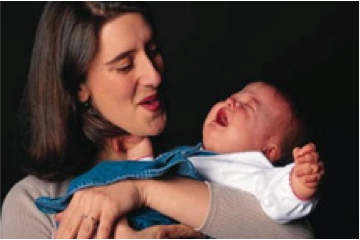Large Families and Female-Headed Households
Due to the limited supply of adequately sized units to accommodate larger households, large families often face significant difficulty in locating adequately sized, affordable housing. Female-headed households can have lower incomes and higher living expenses and may lack the resources needed for adequate childcare or job training services, often making the search for affordable, decent, and safe housing more difficult.

Special needs are those associated with specific demographic or occupational groups that call for specific program responses, such as preservation of single-room occupancy hotels or the development of units with larger bedroom counts. The statute specifically requires analysis of the special housing needs of people who are elderly or disabled (including developmental disabilities), female-headed households, large families, farmworkers, and people experiencing homelessness. These special-needs groups often spend a disproportionate amount of their income to secure safe and decent housing and are sometimes subject to discrimination based on their specific needs or circumstances.
In addition to the groups listed above, the analysis of special needs should also include any other group the locality deems appropriate such as student populations, Native American tribes, people with HIV/AIDS, etc.
Government Code
Government Code Section 65583(a)(7) requires “An analysis of any special housing needs, such as those of the elderly, persons with disabilities, including a developmental disability, as defined in Section 4512 of the Welfare and Institutions Code; large families, farmworkers, families with female heads of households, and families and persons in need of emergency shelter….”
Requisite Analysis
A thorough analysis will assist a locality in identifying groups that have the most-serious housing needs in order to develop and prioritize responsive programs. The analysis of each special-needs group should include the following:
- A quantification of the total number of persons and households in the special housing needs group, including tenure (rental or ownership), where possible.
- A quantification and qualitative description of the need (including a description of the potential housing problems faced by the special needs groups), a description of any existing resources or programs, and an assessment of unmet needs.
- Identification of potential program or policy options and resources to address the need.
Large Households
In addition to the requisite analysis above, a thorough analysis of the special housing needs for large households (households with 5 or more persons) should identify and consider:
- Number of large households with lower-incomes.
- Number of large households by tenure (renter or ownership). Information on tenure will assist the local government in developing appropriate housing policies and prioritizing housing resources. For example, if the tenure data reveals a significant share of large family households are renters, the local government could develop and implement programs to facilitate the development of rental housing with three or more bedrooms.
- Housing stock by number of bedrooms.
- Analysis of the impacts on larger household families where the housing market does not meet the needs. For example, overcrowding can result from the lack of adequate housing. The jurisdiction should consider these impacts in designing appropriate programmatic responses.
Female-Headed Households
In addition to the requisite analysis above, a thorough analysis of the special housing needs of female-headed households should consider:
- Number of female-headed households.
- Number of such households with incomes below the poverty level.
- Data on quantifying households with and without children 18 years and younger.
- A description of changes in the percentage/number of female-headed households as identified in the prior housing-element update.
- The number of all single-parent–headed households (male and female).
- The available resources and unmet needs. For example, female-headed households often lack the resources needed for adequate childcare or job training services. Jurisdictions should consult with local service providers in the development of programs to address shortfalls in needed services or lack of housing-related resources for female-headed households.
Sample Tables
The following sample tables can help in organizing critical information. The information provided in the tables should be tailored to the jurisdiction and followed by appropriate analysis. (Note: These sample tables are not intended to substitute for addressing the analytical requirements of housing-element law.)
| Household Size by Tenure (Renter or Ownership) | ||||||
|---|---|---|---|---|---|---|
| Farm operations with less than 10 employees | 1-4 Persons | 5+ Persons | Total | |||
| Number | Percent | Number | Percent | Number | Percent | |
| Owner | ||||||
| Renter | ||||||
| Total | ||||||
Source: American Community Survey (B25009)
| Household Size (by Income) | ||||||
|---|---|---|---|---|---|---|
| Income Level | 1-4 Persons | 5+ Persons | Total | |||
| Number | Percent | Number | Percent | Number | Percent | |
| Below 50% of area median income | ||||||
| 51% to 80% of area median income | ||||||
| 81% to 120% of area median income | ||||||
| Above 120% of area median income | ||||||
| Total | ||||||
Source: HUD Comprehensive Housing Affordability Strategy (CHAS) data download tool
| Existing Housing Stock — Number of Bedrooms (By Tenure) | ||||||
|---|---|---|---|---|---|---|
| Bedroom Type | Owner Households | Renter Households | All Households | |||
| Number | Percent | Number | Percent | Number | Percent | |
| 0 Bedrooms | ||||||
| 1 Bedroom | ||||||
| 2 Bedrooms | ||||||
| 3 Bedrooms | ||||||
| 4 Bedrooms | ||||||
| 5+ Bedrooms | ||||||
| Total | ||||||
Source: 2012 American Community Survey (B25042)
| Female-Headed Households | ||
|---|---|---|
| Householder Type | Number | Percent |
| Total households | ||
| Total female-headed households | ||
| Female-headed households with children under 18 | ||
| Female-headed households without children under 18 | ||
| Total families under the poverty level | ||
| Female-headed households under the poverty level | ||
Source: 2012 American Community Survey (B17012)

